Strolling through Magome Juku, nestled along the historic Nakasendo trail, I couldn’t help but feel whisked back to Edo-period Japan. The town, with its cobblestone paths and traditional charm, felt like a living museum, lined with functional souvenir shops, tea houses and restaurants. This town was once a vital stop on the ancient highway that connected Tokyo and Kyoto, offering weary travellers a place to rest. Today, it’s recognized for its historical significance and beauty.
As I wandered down the narrow streets of Magome Juku, I was surrounded by beautifully preserved wooden structures. Each building, with its unique design and history, seemed to speak of the countless travellers who had passed through this town over the centuries. The cobbled paths, winding through the lush hills, added to the town’s picturesque scenery, creating a perfect backdrop for how Japan must have looked like back in the Edo times.
In this guide, I’ll share my journey to Magome Juku – how I reached this hidden gem, the best times to visit, and tips to make your visit as memorable as mine.
Table of Contents
- Brief History of Magome Juku
- What does Magome Juku mean?
- Transformation Over Time
- Why Visit Magome Juku
- How to get to Magome Juku
- Best time to visit Magome
- Spring (March to May)
- Summer (June to August)
- Autumn (September to November)
- Winter (December to February)
- Things to do in Magome Juku
- Walk on the Nakasendo trail
- Magome Waki-Honjin Museum
- Toson Memorial Museum
- Magome-juku Old Official Bulletin Board
- Magome-juku Lookout Pointpueblo samurai
- Eat traditional Japanese food
- Shop for Magome souvenirs
- Where to stay in Magome Juku
- My Tips for Magome
- Conclusion
- Frequently Asked Questions
Brief History of Magome Juku
Magome Juku is located in the stunning Kiso Valley, in the Gifu Prefecture, and it’s a historic post-town with roots deep in the Edo period (1603–1868).
Back then, it served as the 43rd of the 69 stations along the Nakasendo Trail, which was the important route connecting Edo (now Tokyo) to Kyoto. Magome Juku was an essential stop for travellers along the route, as it offered lodgings and food. The town was teeming with samurai, merchants, and travellers.
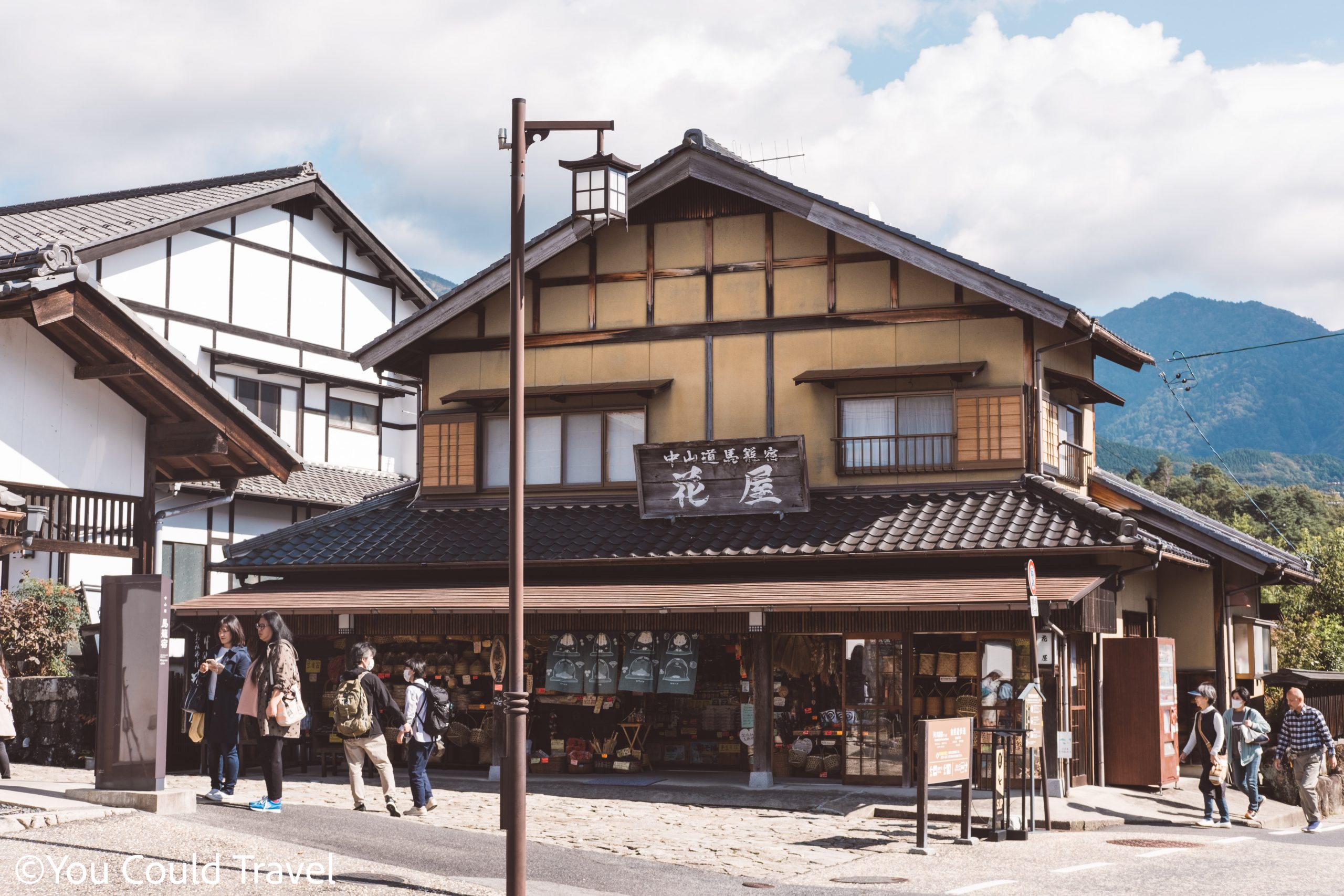
What does Magome Juku mean?
Magome Juku can be broken down into two parts for meaning, which is very much connected with its landscape and strategic position on the Tokyo – Kyoto trail.
Magome (馬籠): The kanji characters for Magome can be translated as horse (馬) and basket (籠). The name is believed to be derived from the town’s location on a steep path along the Nakasendo route. Story has it that the path in Magome was so steep that travellers often had to leave their horses at the town before continuing their journey, hence the reference to horses in the name.
Juku (宿): This kanji character means inn or lodging and is used in the context of post towns to refer to the inns and lodgings available for travellers.
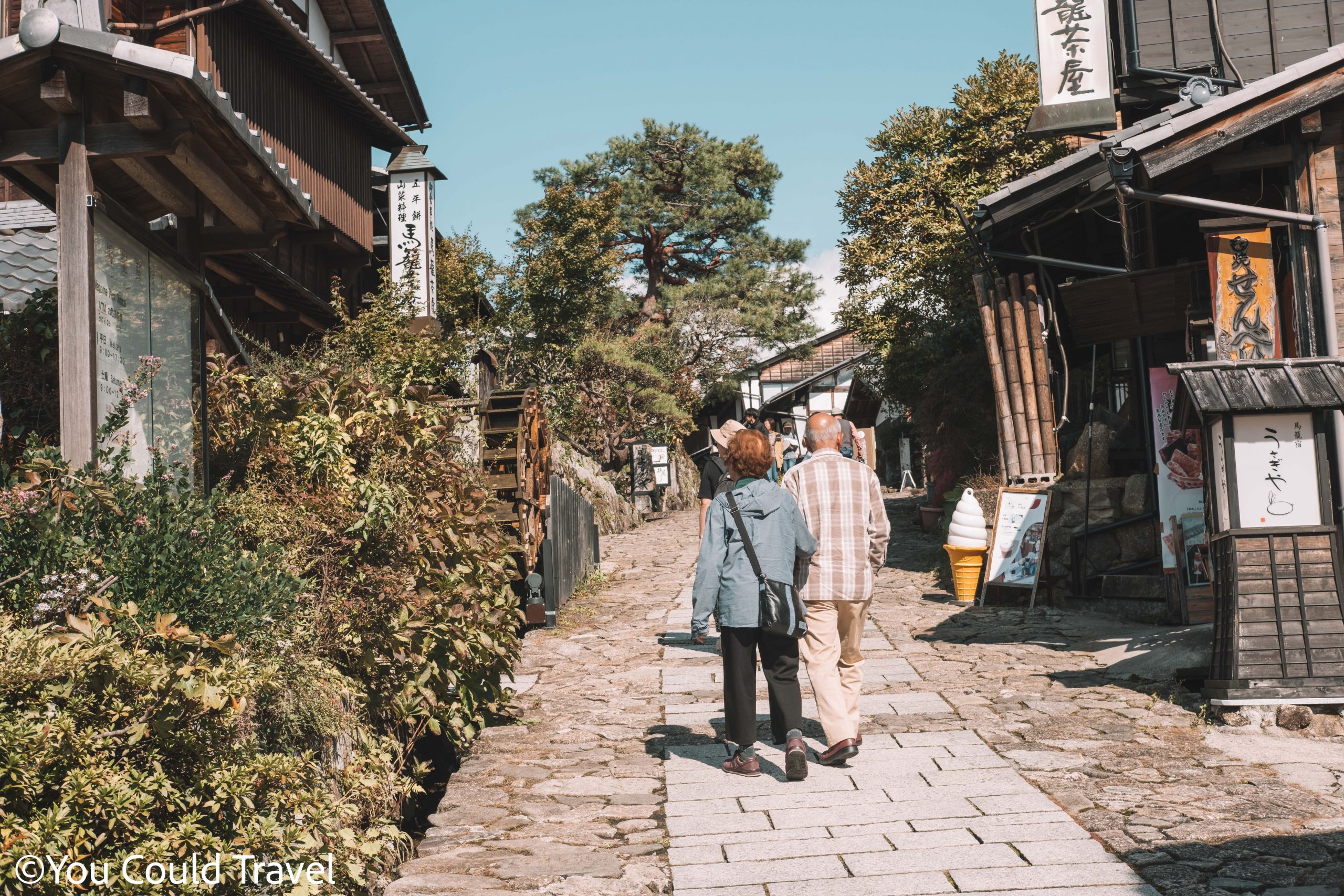
Transformation Over Time
Magome Juku faced a period of decline with the advent of the Chūō Main Line railway, leading to poverty and loss of prominence. Compounding its troubles were two major fires in 1895 and 1915, which destroyed many of its historic buildings.
In recent years, Magome Juku has been revitalized and restored to its former Edo-period appearance. That’s right, not all the houses you see in Magome Juku are originals but a few, like the Shimizuya Museum are still the very same.
This revival has turned Magome into a sought-after tourist spot, especially as it is linked to another restored post town, Tsumago-juku, thanks to a very well-maintained stretch of the old Nakasendō trail.
For added convenience, a bus service links these two historical towns, making it easier for tourists to explore and appreciate these remote locations.
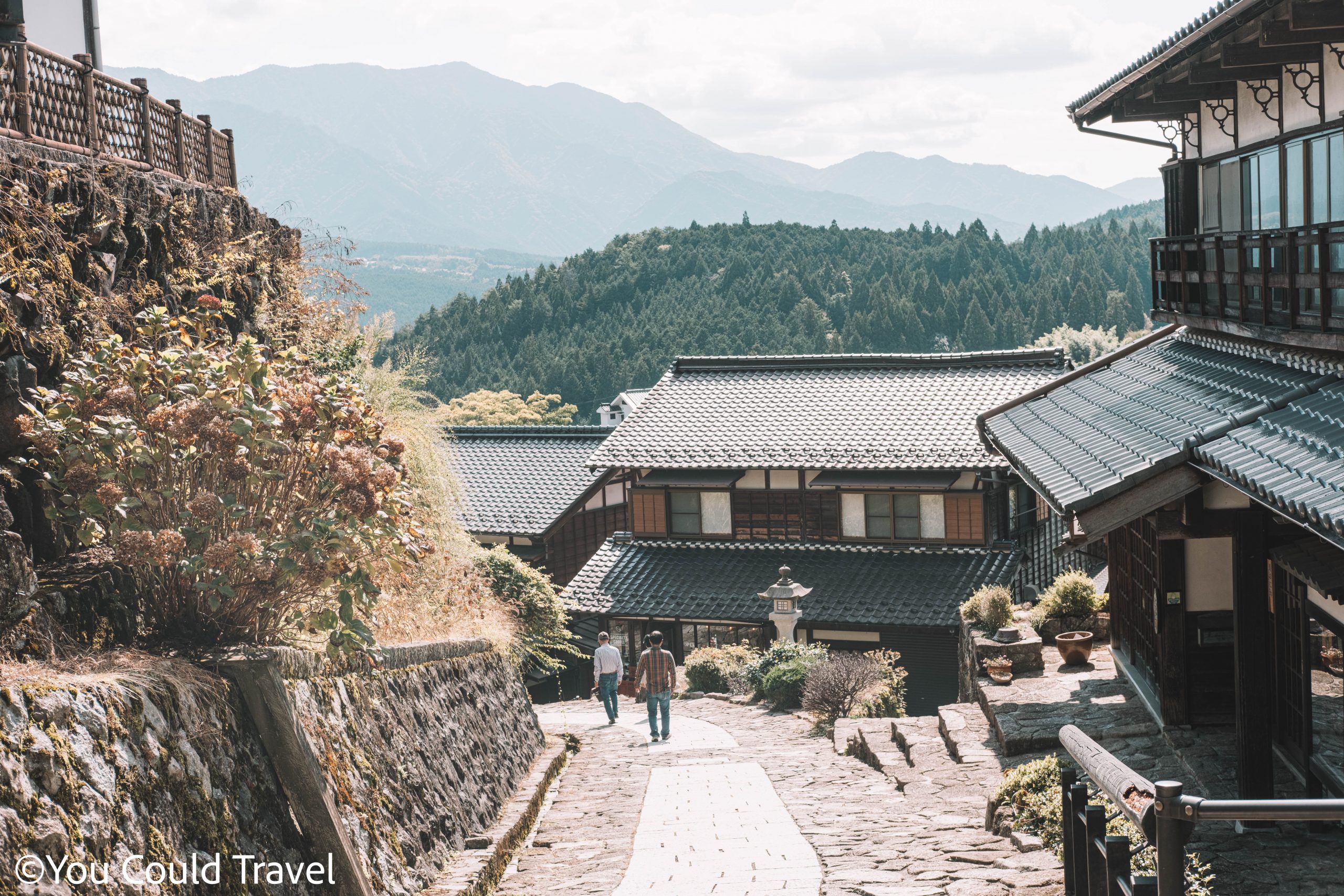
Why Visit Magome Juku
Walking through Magome Juku is like stepping back in time. The town looks stunning with its beautiful wooden houses and lattice-windowed homes, lined along cobblestone streets. As a photographer, I cannot imagine a better place to photograph how Edo Japan looked like.
Beyond its traditional architecture, Magome is also set against the backdrop of the picturesque Kiso Valley. The town’s location on a hillside offers panoramic vistas of the surrounding mountains and valleys. It’s hard not to want to stop every 3 minutes to just take in your surroundings.
Of course, one of the highlights is the scenic trail connecting Magome Juku with Tsumago. This well-preserved path takes you through beautiful rural landscapes, past waterfalls, and forests. You’ll find very remote and welcoming family-ran restaurants, tea houses and souvenir shops, making the experience even more authentic and charming.
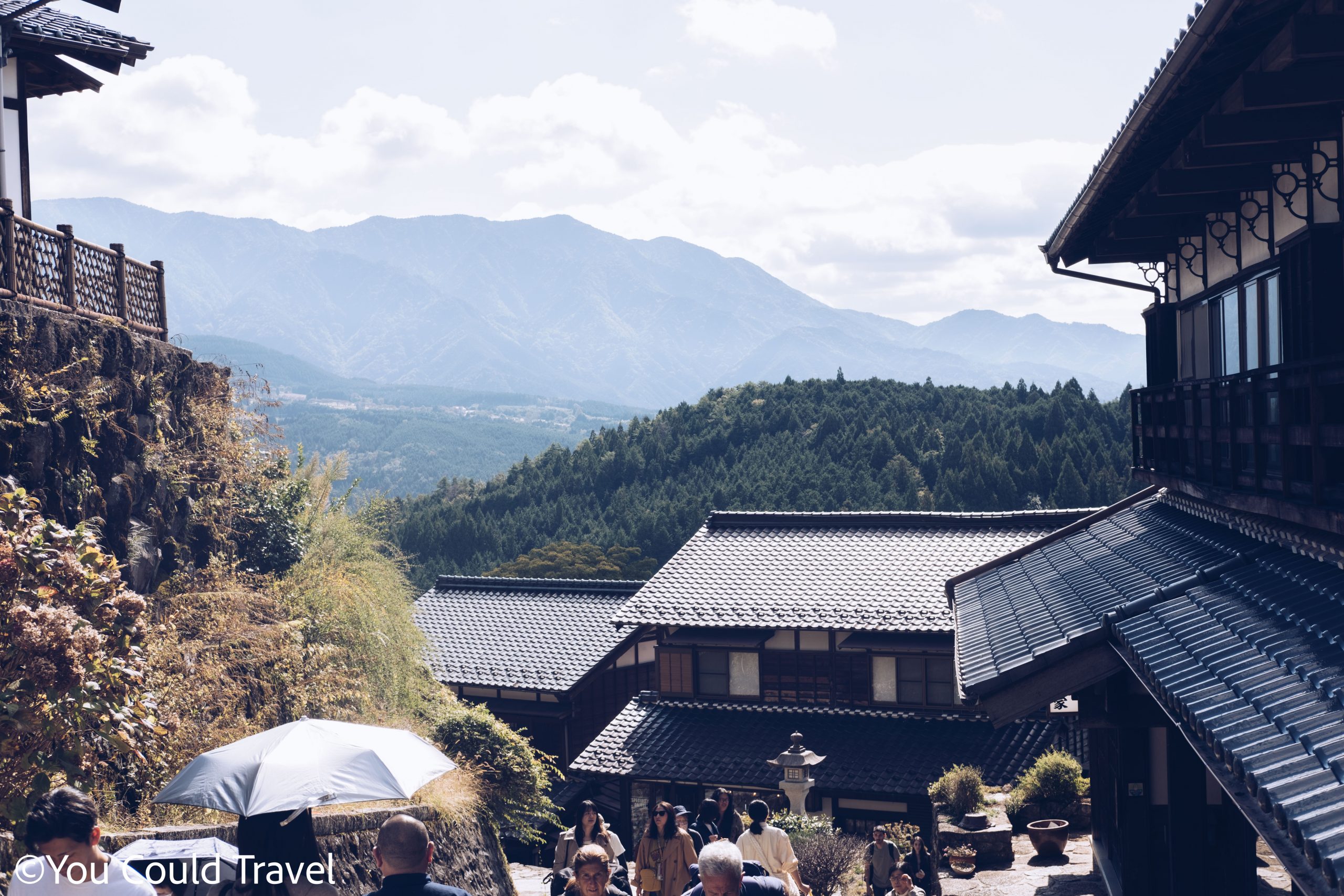
How to get to Magome Juku
The best way to get to Magome is by taking a train and a bus from Nagoya Station. It takes approximately 2 hours to get from Nagoya to Magome and my recommendation is to leave Nagoya no later than 10am.
Take the JR Shinano (Limited Express bound for Nagano) from Nagoya Station to Nakatsugawa Station. This part of the journey takes approximately 50 minutes. The JR Shinano train goes every hour until 4pm. There are other trains such as the Chuo Line, but it’s a rapid so it takes 30 minutes longer to reach Nakatsugawa Station. Both lines are covered by your JR Pass!
From Nakatsugawa Station, take the M Magome bus to Magome Juku bus station. The bus goes every 40 to 60 minutes and takes around 25 minutes (23 stops in total) to reach Magome Juku. When I visited in November, the Magome Bus got very busy. Unless you are lucky and can score a seat on this bus, it can be a somewhat uncomfortable 25 minute journey, especially as there are some winding roads leading to Magome. It’s totally worth it, though!
Very important! Please note that you need cash to ride this bus! Please have some with you, as there is no way to pay by card. You will pay when you exit the bus, when you reach Magome.

Best time to visit Magome
From my experience, avoiding the busiest seasons (during cherry blossoms and autumn foliage) will enable you to have a better experience with fewer crowds and busy buses. You will have a more relaxed hike, without crowded shops and fully booked restaurants. While every season has something special to offer, I believe that visiting at the beginning of November is the best time.
Spring (March to May)
Spring is a beautiful time to visit Magome Juku, but it is also the most popular when the town gets very crowded. The weather is pleasantly warm, and the cherry blossoms create a picturesque setting. It’s a perfect time for walking the Magome-Tsumago trail, as the path is lined with blossoming trees and flowers. Note that cherry blossoms are expected to bloom in the last week of March. In May, there may be local crowds due to the special Golden Week celebrations.
Summer (June to August)
Summers are hot and rainy, but the lush greenery and full bloom of summer flowers make it a visually stunning time to visit. Being in the mountains, you will get some respite from the otherwise very hot and humid city.
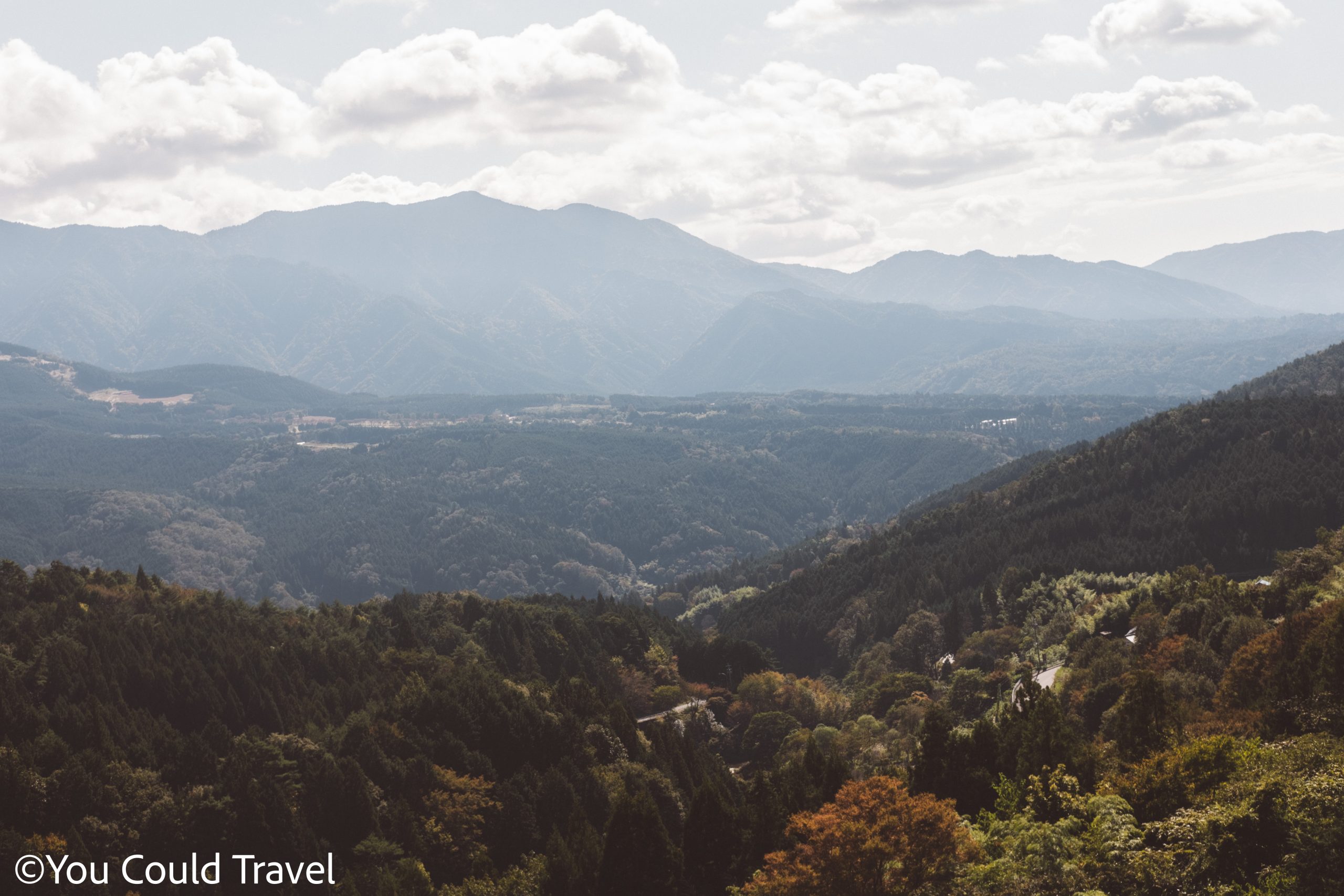
Autumn (September to November)
Autumn is, in my opinion and experience, the best time to visit Magome Juku. The changing colours of the leaves create a breathtaking landscape. The cooler temperatures make hiking between Magome and Tsumago comfortable and enjoyable. The trail is fairly busy though, but not as busy as during the sakura season.
Winter (December to February)
While winter is colder and might see some snow, it offers a serene and peaceful experience. The snow-covered landscape provides a different kind of beauty, and the town is less crowded. However, do check the weather conditions, especially if you plan to hike, as the trail can be slippery.
Things to do in Magome Juku
Magome might be small, but it’s an excellent place to start the journey on the Nakansedo towards Tsumago. I would say that you need around 1-2 hours max in Magome to get to see the town, eat and shop for souvenirs. It’s enough time to even snap some epic photos too!
Walk on the Nakasendo trail
The top thing to do in Magome is to start hiking on its steep slope and make your way towards Tsumago. On your way you will pass all the shops, the beautiful old school tea houses and sit down for traditional soba restaurants. There are plenty of amenities in Magome to get you ready for the hike, as well as key viewing points for great photos.
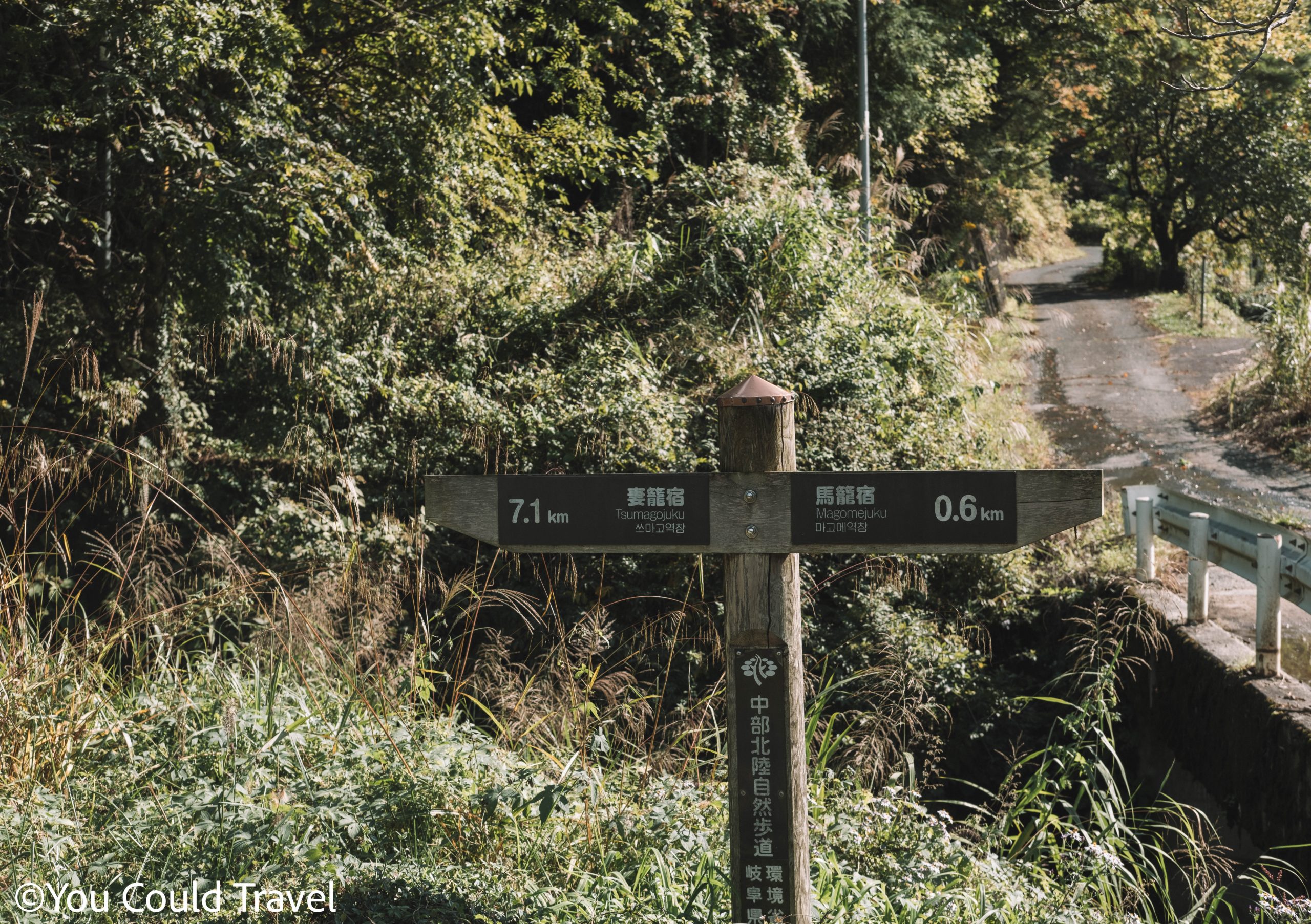
Magome Waki-Honjin Museum
The Magome Wakihonjin was a prestigious inn reserved for high-ranking individuals in the Edo period. Today, the Magome Wakihonjin Archives showcases a restored room with with a collection of household items and historical documents that were used during that era.
Toson Memorial Museum
This museum pays tribute to Shimazaki Tōson, a celebrated writer born in 1872 in what used to be the Honjin, an inn designated for government officials. Tragically, Tōson’s childhood home was lost in the fire of 1985. However, in 1947, the house underwent a restoration, and it now serves as the museum dedicated to his life and works.
The entrance fee is 550 yen.
Magome-juku Old Official Bulletin Board
This bulletin board, known in Japanese as Kosatsuba, played a crucial role during the Edo period (1603-1868). It was used by the government to disseminate official announcements, laws, and edicts to the public.
This bulletin board would have been an important communication tool, conveying information from the shogunate (the military government of the time) to travellers and townspeople.
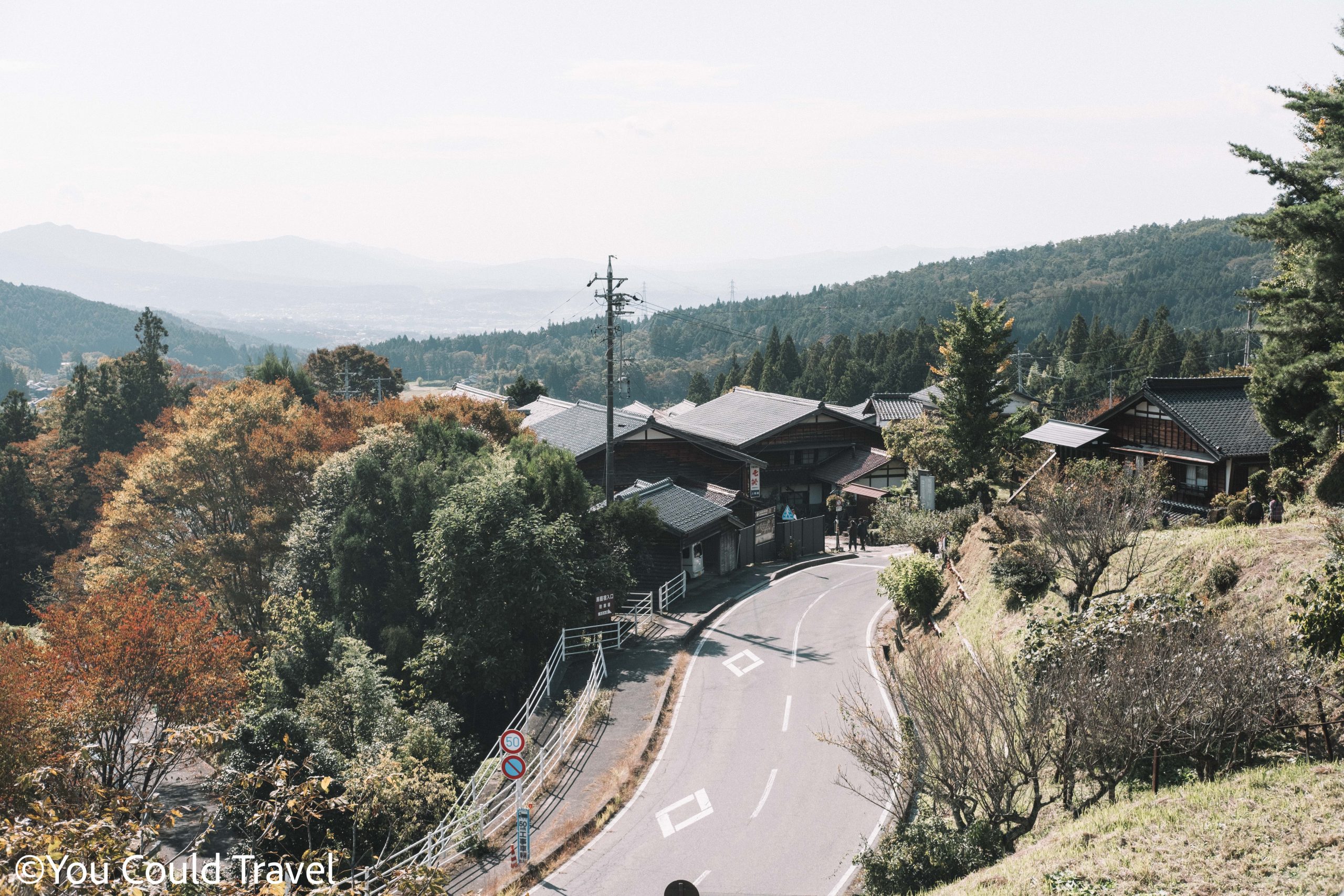
Magome-juku Lookout Pointpueblo samurai
A beautiful observation deck in Magome that offers incredible views of Magome with the backdrop of the Gifu mountains. There are benches where you can sit down, enjoy a snack and just admire your surroundings. I’ve seen many spectacular views in Japan, but this really reminds you how deep in the mountains you really are. Beautiful, especially on a sunny day!
Eat traditional Japanese food
Soba Restaurant Mikazukian – It’s a fantastic restaurant for traditional soba with tempura on the site. I recommend getting the cold soba with tempura. The duck soba is absolutely delicious but usually sell out fast.
Haginoya – A proper kaiseki restaurant right in the heart of Magome. If you are in a rush, go for their lunch course which is around 2700 yen per person. You can also have mini kaiseki, but if you want something truly authentic, I recommend ordering their kaiseki menu which starts from 6600 yen per person. Reservation is required. You can use their official contact form to request a table in advance.
Masuya – This is a casual Japanese restaurant with affordable prices. You will find Teishoku meals on their menu, which usually come with fish, tempura or tonkatsu, rice, miso and some side dishes. This is a very friendly service with English menu available as well.
Juri – On my last trip to Magome, I stopped at Juri which is just slightly out of Magome, around 20 minutes from the centre, as you walk toward Tsumago. Juri is family ran by really cute old ladies who make incredible dishes. Stop here for ice cream or sit down for a delicious lunch which consists of soba, rice, tempura, miso and vegetables. Prices are very reasonable, I’ve paid just 1600 yen for a full lunch.
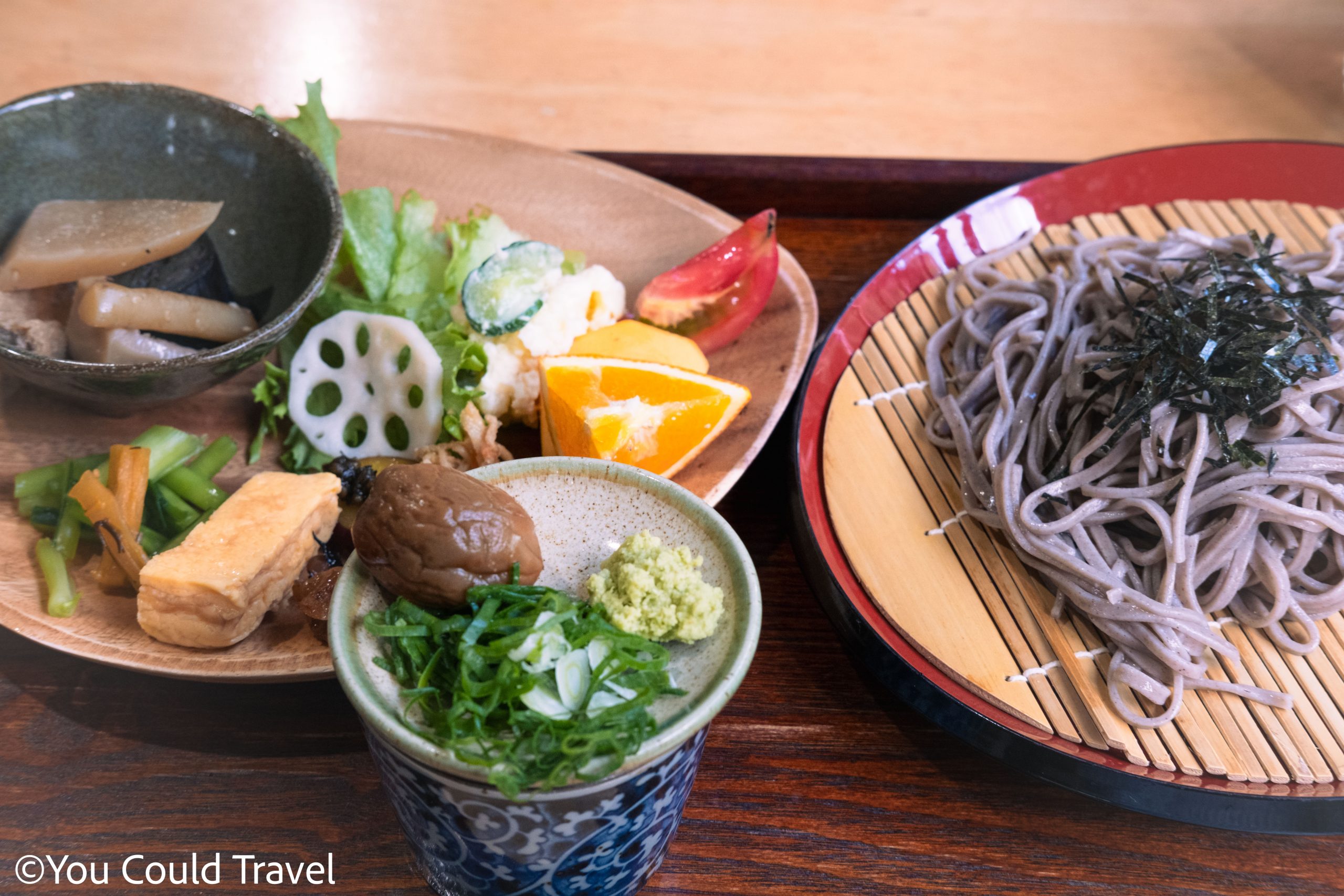
Shop for Magome souvenirs
There are plenty of beautiful and traditional Japanese souvenirs you can purchase from Magome. The whole town is lined with small independent businesses selling all sorts of cute items, ranging from beautifully packed food, through to crafted baskets and traditional straw hats to protect you from the blasting sun.
Shimo-ogiya is a one stop shop for just about everything traditional you may want from Magome. Yamashiroya specialises in handmade gifts and the owner speaks good English so you can find something crafted just for you.
Omiyage Hanaya is a novelty shop which has all sorts of gifts including beautiful handmade hanging decorations for your home and traditional straw hats. Magomekan Annex is right in front of the Magome bus stop. It’s an excellent shop with a wider range of souvenirs including sweets, purses, cotton shibori and even hair accessories.
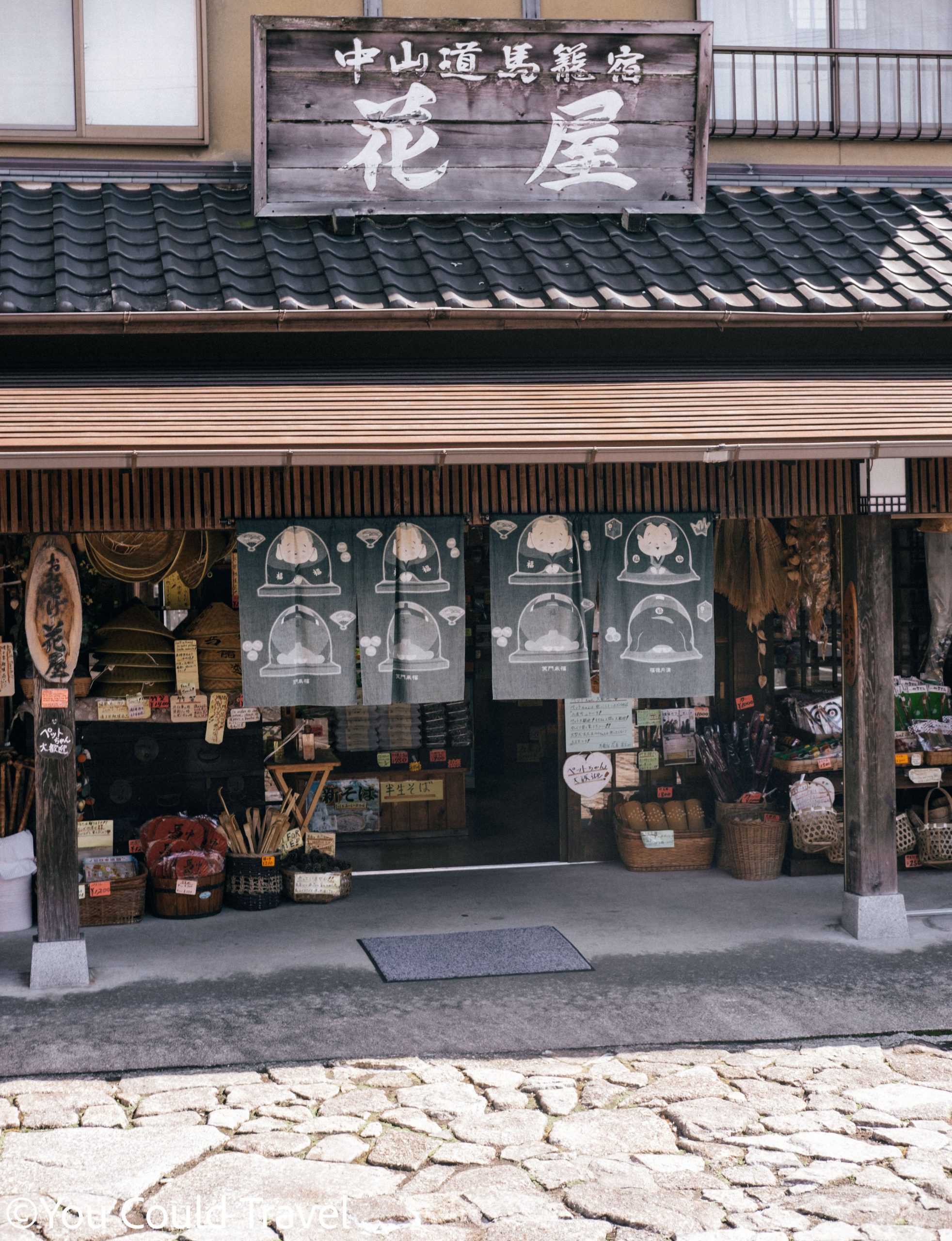
Where to stay in Magome Juku
Magome used to be the 43rd station along the Makasendo trail, which means the whole town was perfectly suited for travellers looking to stay overnight. While many of the inns have been converted into museums, souvenir shops and restaurants, there are still some well-preserved inns which continue to welcome overnight guests. Please remember that Magome is incredibly popular, and these guesthouses tend to book months in advance.
Guesthouse Nedoko – Tiny and fuss-free rooms for travellers looking to spend the night resting. This particular accommodation is suitable primarily if you need a bed for the night. While spotless, please do note that this is a 2-star accommodation with shared bathrooms.
Magome Chaya – This low key accommodation offers traditional rooms with futons for groups of 2 or 3 travellers. Bathrooms are shared in this rustic and traditional accommodation. There is a hot public bath available and the basic rooms have shoji paper screens and low tables.
Tajimaya – A traditional room with tatami and futons. Rooms come with yukatas for all guests. There is a public bath available and toilets are shared here.
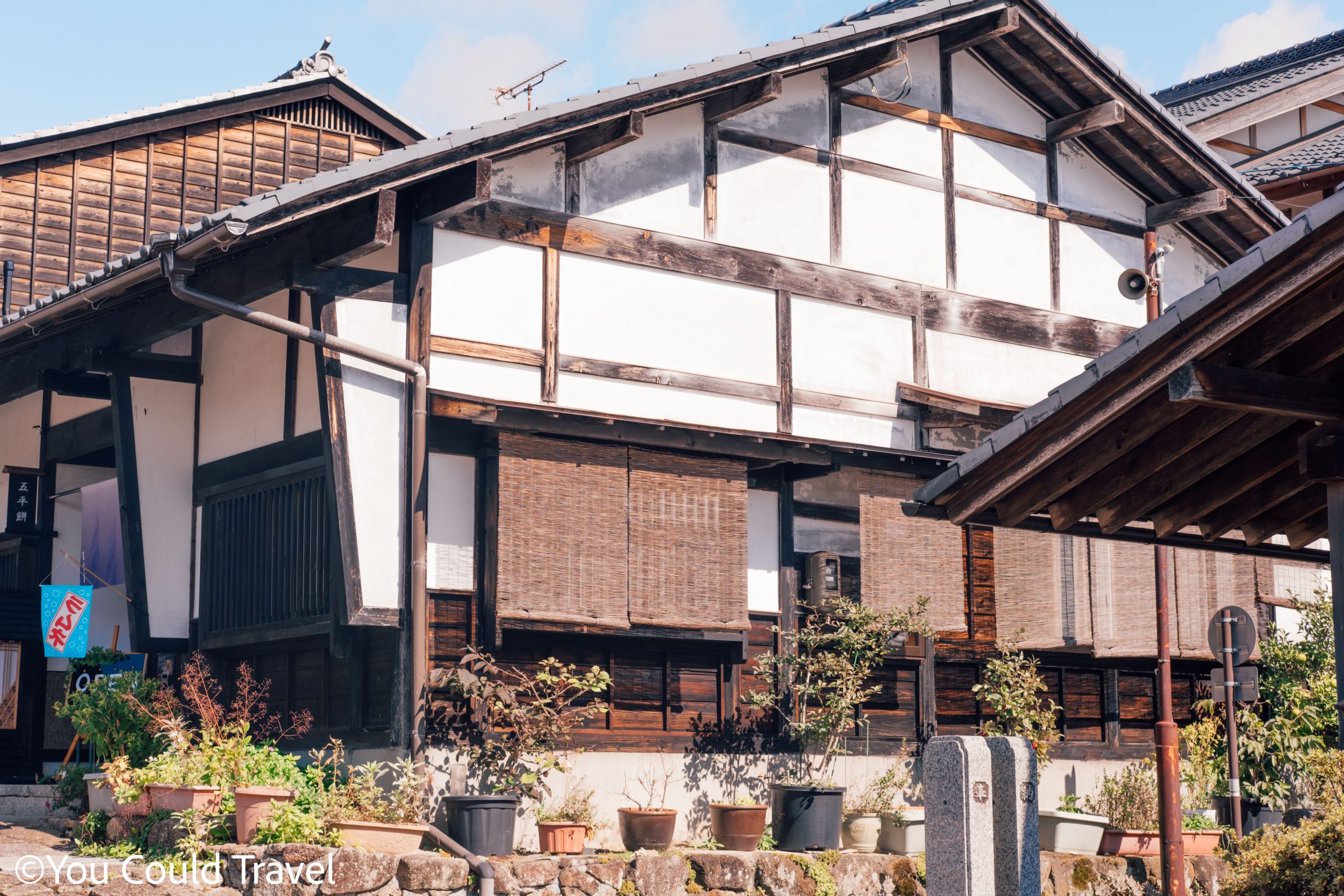
My Tips for Magome
I loved my visit to Magome and on my last visit I learned some valuable lessons which, I hope, can help you make the most out of your trip.
Wear comfortable shoes – Magome is on a steep hill with cobbled stone, so wearing comfortable shoes is a must. Especially if you continue walking towards Tsumago or even further. Some steps are uneven but overall the trail is easy.
Start early – I honestly recommend getting the 8am JR Shinano. You will arrive in Magome before 10am which gives you plenty of time to walk around, enjoy some shopping, eat and visit a couple of attractions. It will also give you ample time to hike to Tsumago and make sure you arrive there before the last train back to Nagoya. Starting early also avoids many of the crowds, so it’s a win all around.
Check the weather forecast – To truly appreciate the beauty of Magome, it’s essential to pick a day when the weather is on your side. While a blanket of snow can add a touch of charm, rain tends to dampen the entire hiking experience. It not only obscures the stunning views but also makes it challenging to relish the surrounding natural beauty. Therefore, always check the weather forecast in advance and aim to plan your visit for a day that’s either sunny or, at the very least, cloudy but dry.
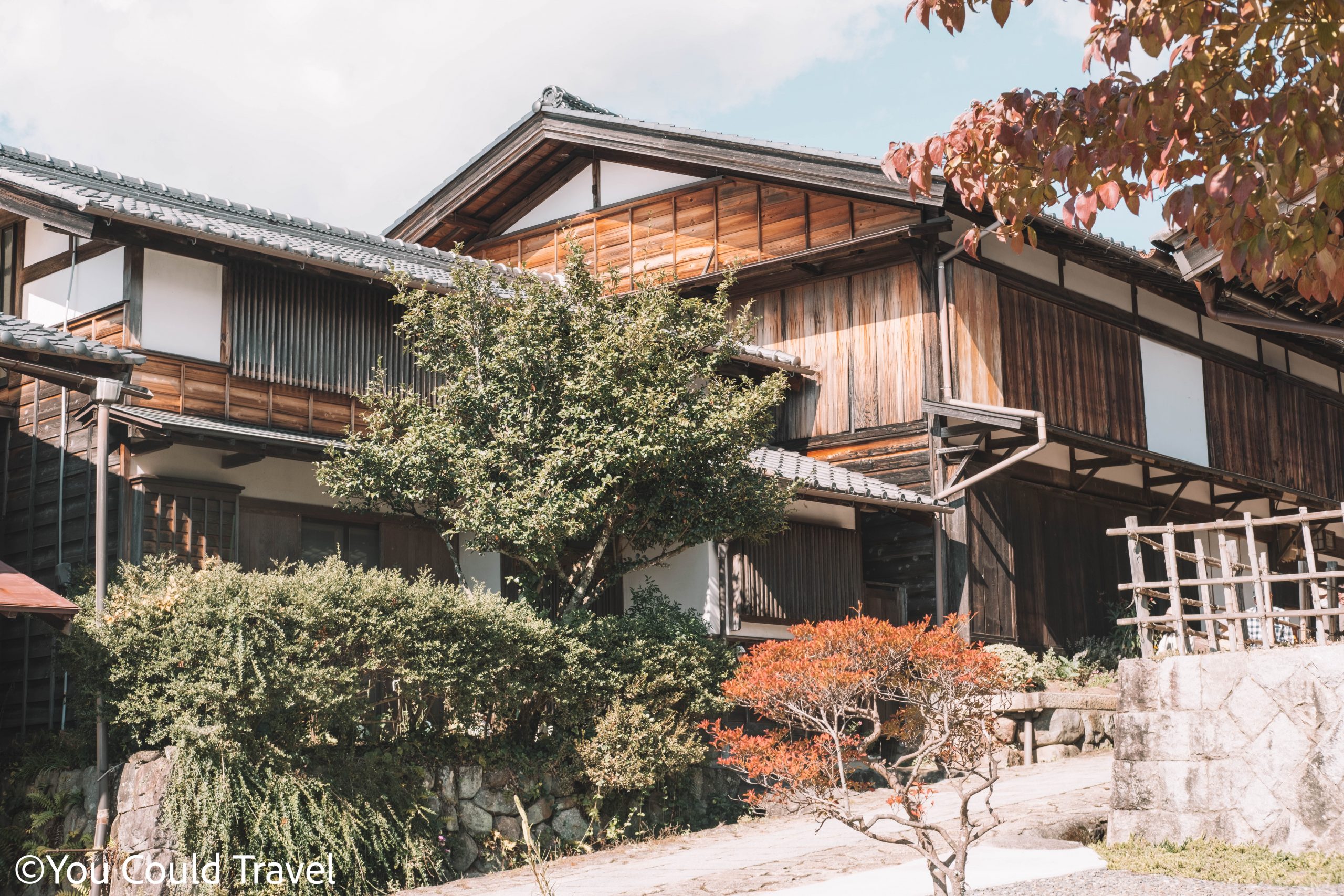
Wear sunscreen – If you visit on a sunny day, make sure to bring sunscreen and a hat.
Carry cash – Seriously, cash is a must in Magome. You will need for the bus, for the shops and for the local restaurants. Some establishments do take cards, but most of them don’t and prefer cash either way. These are small businesses with small profit margins, so paying in cash helps them avoid large processing fees.
Consider your accommodation carefully – For my trip to Magome, I chose to stay in Nagoya for two nights, which made organizing the journey more convenient. I started the day with a train and bus ride to Magome and then returned to my accommodation in Nagoya in the evening. From my perspective, staying overnight in Magome is more suitable if you’re tackling a significant portion of the Nakasendo trail or if you’re arriving in Magome as a stopover after a long hike elsewhere. Nagoya offers very reasonably priced accommodation options. The hotels there are generally of high quality, providing clean rooms with private bathrooms.
Be prepared for wildlife – You are hiking in the Japanese mountains, so bears are not uncommon here. Many people have a hiking stick as well as a bell attached to their backpacks to make noise and deter bears from coming close.
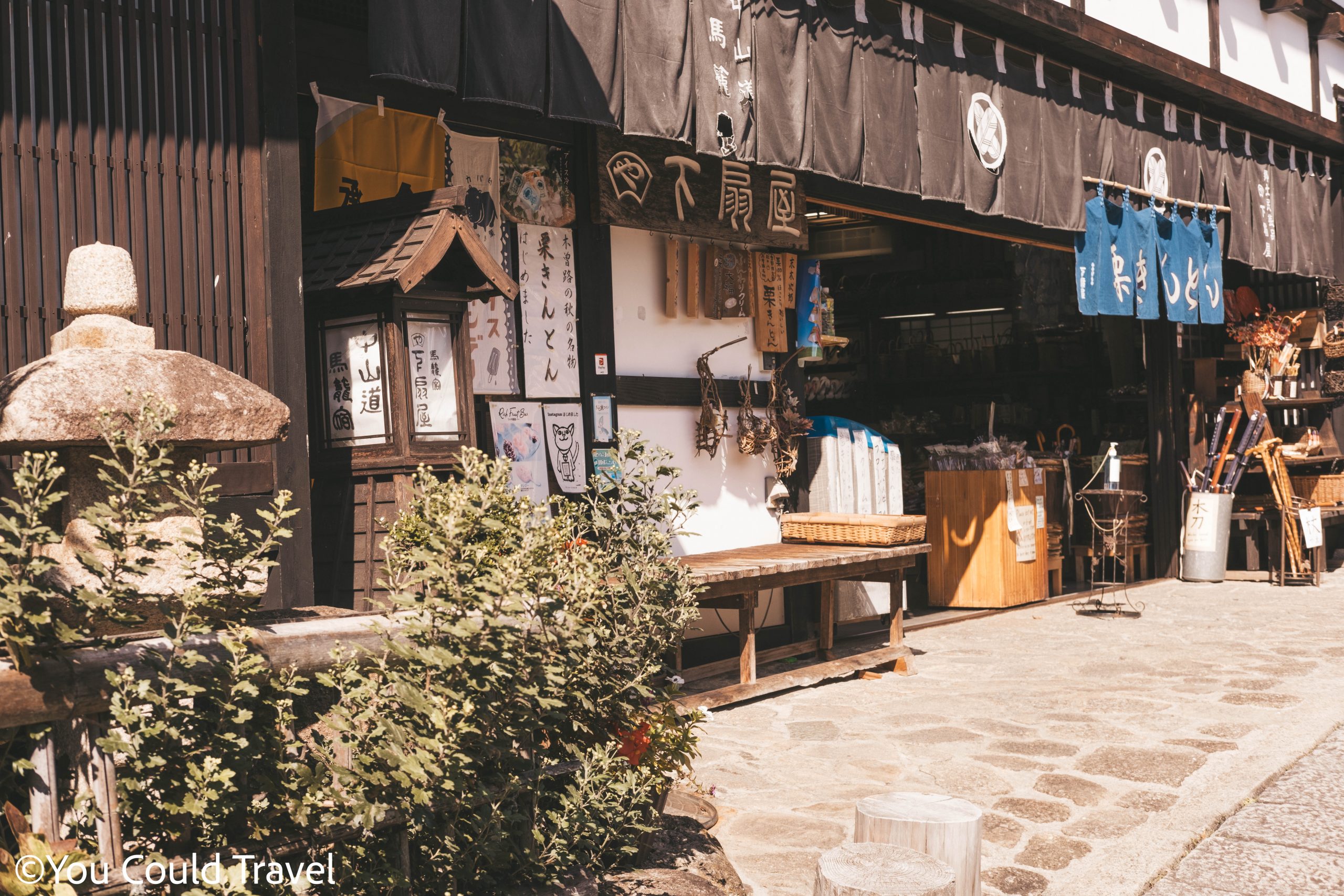
Conclusion
Magome-Juku is a wonderful little town in the mountains of Japan and one you should definitely add to your list of places to visit in Japan. Magome is the perfect town to spend a day enjoying its surroundings, getting souvenirs, eating traditional food and trying local Japanese sweets.
I loved my time in Magome-juku, and I was surprised to see how beautiful it truly is. While it is a relatively difficult day trip from Tokyo, I do recommend having a base in Nagoya and travelling to Magome for the day. It’s really worth it!
Frequently Asked Questions
Can you stay in Magome?
Yes, you can stay in Magome. There are very few overnight options and all inns have traditional Japanese rooms with futons and shared bathrooms. Magome is ideal to stay if you are hiking the whole Nakasendo trail and need a place to stay for the night.
Which prefecture is Magome in?
Magome is located in the Gifu Prefecture of Japan. It’s part of the Kiso Valley which attracts visitors for its natural beauty and historical significance.


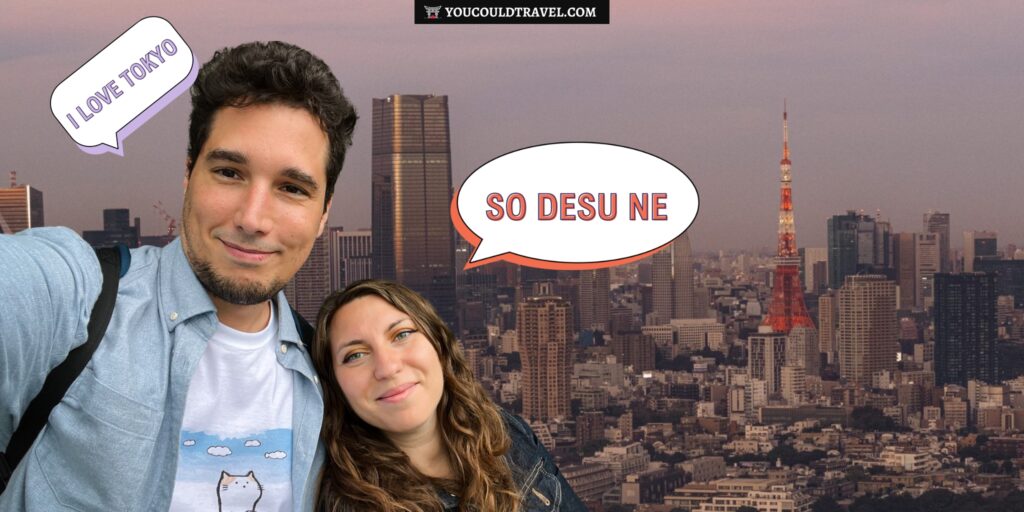

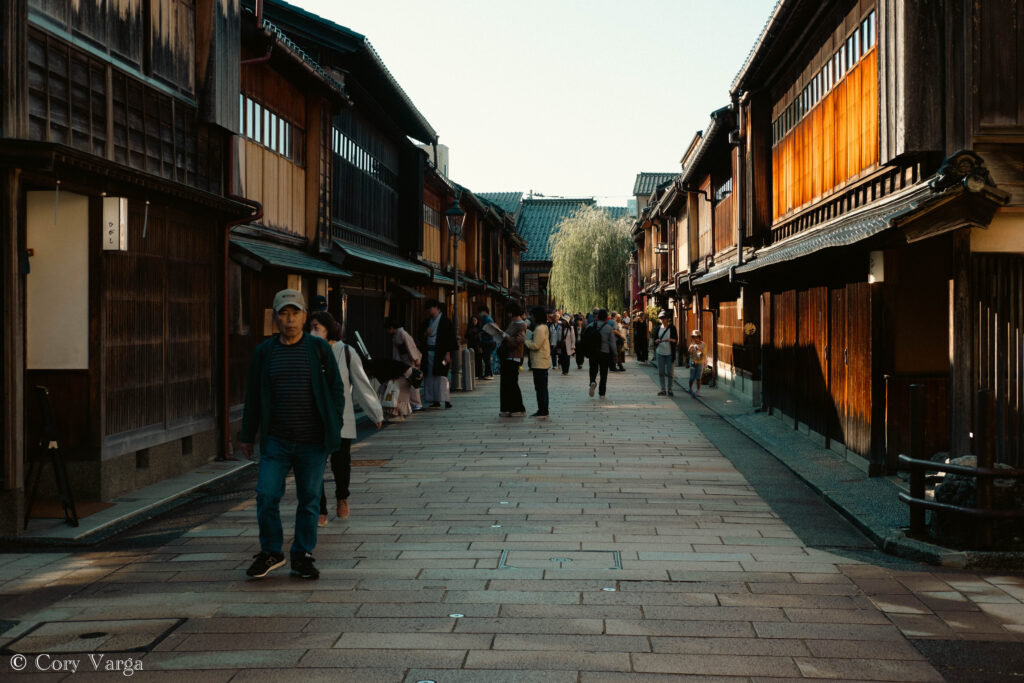
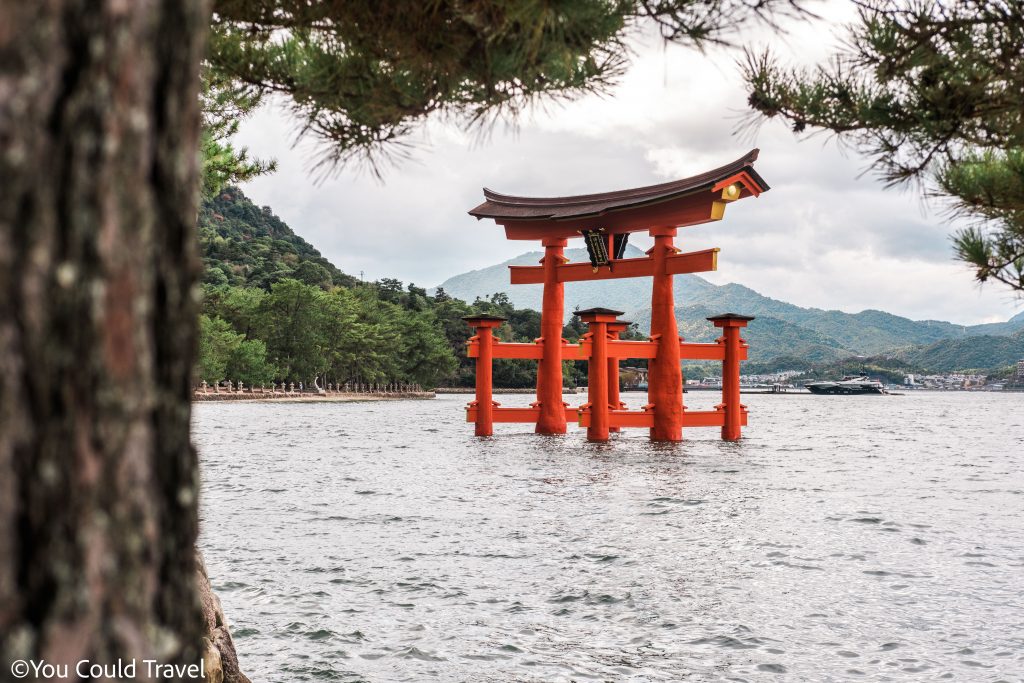
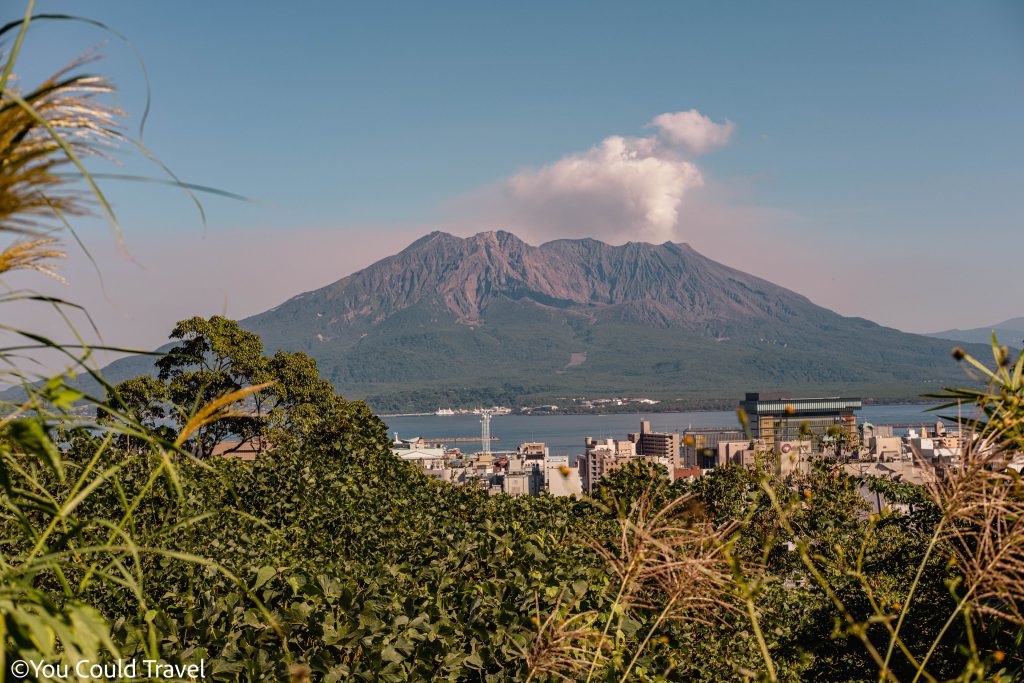


Leave a Reply